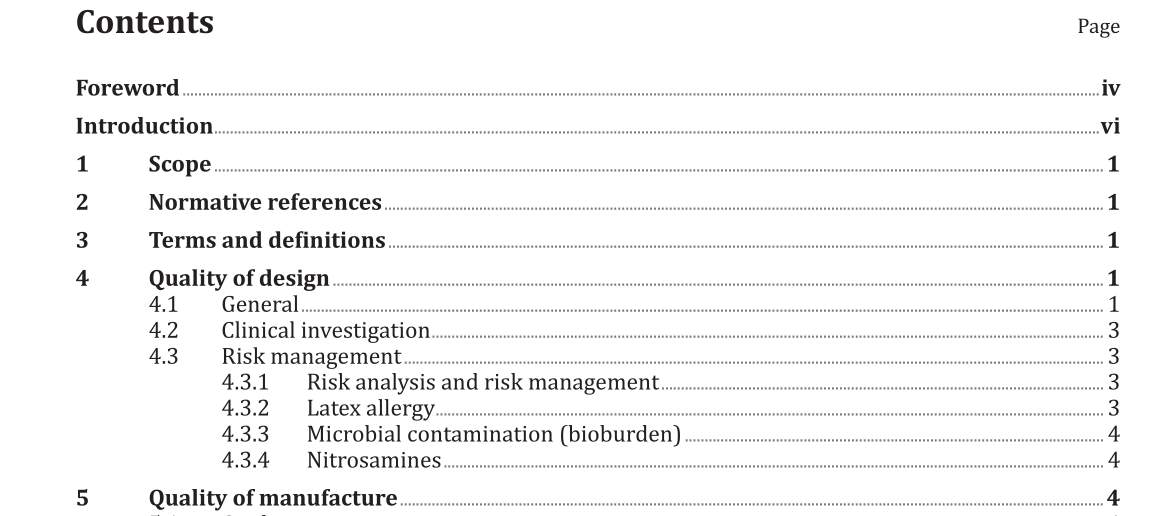ISO 16038:2017 pdf download.Male condoms — Guidance on the use of ISO 4074 and ISO 23409 in the quality management of condoms
1 Scope
This document provides guidance on using ISO 4074 and ISO 23409 and addresses quality issues to be considered during the development, manufacture, quality verification and procurement of condoms. It encompasses the aspects of quality management systems in the design, manufacture and delivery of condoms with an emphasis on performance, safety and reliability. Male condoms are either made from essentially natural rubber latex, in which case the requirements of ISO 4074 are applicable, or from synthetic materials and/or blends of synthetic materials and natural rubber latex, in which case the requirements of ISO 23409 are applicable. This document outlines the aspects applicable to both types of condoms with specific clarifications where appropriate.
The design of synthetic condoms and the materials used result from consideration of the variety of materials possible and the need to meet the requirements of efficacy, adequate barrier properties and mechanical strength. The efficacy is evaluated through surrogate virus tests using bacteriophage Phi-X174, followed by clinical trials using comparison against natural rubber latex condoms as reference. Guidance on conducting in vitro viral penetration tests is given in documents such as the USFDA Guidelines and published literature. The penetration of bacteriophage Phi-X174 in test condom design should be evaluated with reference to approved design and levels published in literature. The median level of penetration has been reported to be 7 X 10 (−4) ml. Details of conducting viral penetration tests, including limit of detection of the method and statistical interpretation of results, are given in ISO 23409:2011, Annex G. Design validation should be used as the basis for ensuring that design parameters, such as dimensions, formulation, safety of components and biocompatibility, stability and shelf-life claims, packaging and dressing materials, etc., are appropriate. The biocompatibility studies should be done as per the requirements of ISO 10993-1, ISO 10993-5, ISO 10993-10 and the reports should be evaluated by a qualified toxicologist. When appropriate or necessary, such as when there has been a significant change in the formulation, skin irritation studies and a safety evaluation should be performed and documented as part of design control activities.
4.2 Clinical investigation
Since condoms are medical devices, it may be appropriate to carry out clinical trials rather than relying on laboratory data when significant changes are made to the design, type of lubricant, etc., and or when new materials are used and new claims are made. Clinical trials may also be conducted to compare specific characteristics of different products. These characteristics can include donning, slippage and breakage studies, and other parameters that can affect the efficacy and safety of condoms. Clinical trials should be conducted under a written protocol to monitor the objectives clearly stated in accordance with ISO 14155 and ISO 29943-1. Due consideration should be given to the inclusion of appropriate reference condoms. The risk management should be carried out as specified in ISO 14971. ISO 16037 is a guidance document that recommends physical parameters that should be measured before conducting clinical trials. The clinical data thus generated should be reviewed as required to ensure continued safety and conformity to the performance requirements of the condoms.
ISO 16038:2017 pdf download
